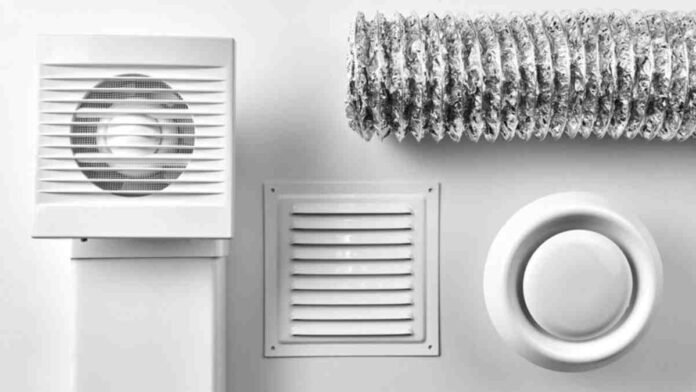When it comes to indoor climate, exhaust and table fans play crucial roles in maintaining comfort and air quality. Whether expelling stale air or providing a refreshing breeze, these devices regulate temperature and airflow in ways that improve the overall atmosphere of a room. While they serve different purposes, they both contribute significantly to the ventilation and comfort of a living space, making them essential household appliances.
About exhaust fans
Exhaust fans remove unwanted air, moisture, and odours from an enclosed space, ensuring proper ventilation. They are typically installed in rooms like kitchens, bathrooms, or basements, where humidity and pollutants tend to accumulate quickly.
Benefits of exhaust fans
Moisture control
Exhaust fans’ primary function is to expel excess moisture, especially in bathrooms and kitchens. This prevents mould and mildew, which can cause health problems and damage to surfaces.
Odour elimination
Cooking fumes, bathroom smells, and stale air can linger in a room without proper ventilation. Exhaust fans help remove these odours, ensuring the space remains fresh and breathable.
Improved air quality
Exhaust fans lead to better indoor air quality by continuously expelling polluted air and replacing it with fresh air, making them essential for maintaining a healthy environment.
Temperature regulation
In hotter climates, exhaust fans can expel hot air from the home, particularly in spaces like attics or kitchens, preventing rooms from becoming uncomfortably warm.
Understanding table fans
Table fans are compact, portable appliances that provide localised cooling by circulating air in a specific area. They are an excellent solution for creating a comfortable environment in small rooms or for individual use.
Advantages of table fans
Personalised cooling
Table fans offer targeted airflow, making them ideal for cooling specific areas or individuals, such as a desk, bed, or seating area.
Portability
Table fans are lightweight and portable easily, so they can be used in different rooms or even taken outdoors. Their portability makes them a flexible solution for various needs.
Energy efficiency
Table fans consume lesser electricity than air conditioning, making them an energy-efficient option for cooling spaces without driving up utility bills.
Multi-speed settings
Many table fans have adjustable speed controls, letting you adjust the airflow intensity according to your preferences.
Choosing the right fans for your needs
Room size
Consider a more powerful exhaust fan to ensure adequate ventilation for larger rooms, while a table fan provides localised comfort in smaller spaces.
Energy efficient
Both exhaust and table fans are generally energy-efficient, but to further reduce your electricity consumption, look for models with energy-saving features.
Noise levels
Choose a quiet fan if you plan to use it in areas like bedrooms or study rooms. Many modern fans operate quietly while providing optimal performance.
Durability
Opt for high-quality fans that can withstand regular use, particularly if the fans are placed in areas prone to moisture or dust.
Conclusion
Exhaust and table fans are essential appliances that work together to enhance the comfort and air quality in any living space. While exhaust fans focus on improving ventilation and removing pollutants, table fans provide personal cooling and air circulation. By integrating both into your home, you can ensure a pleasant, healthy, and comfortable environment, no matter the season.




